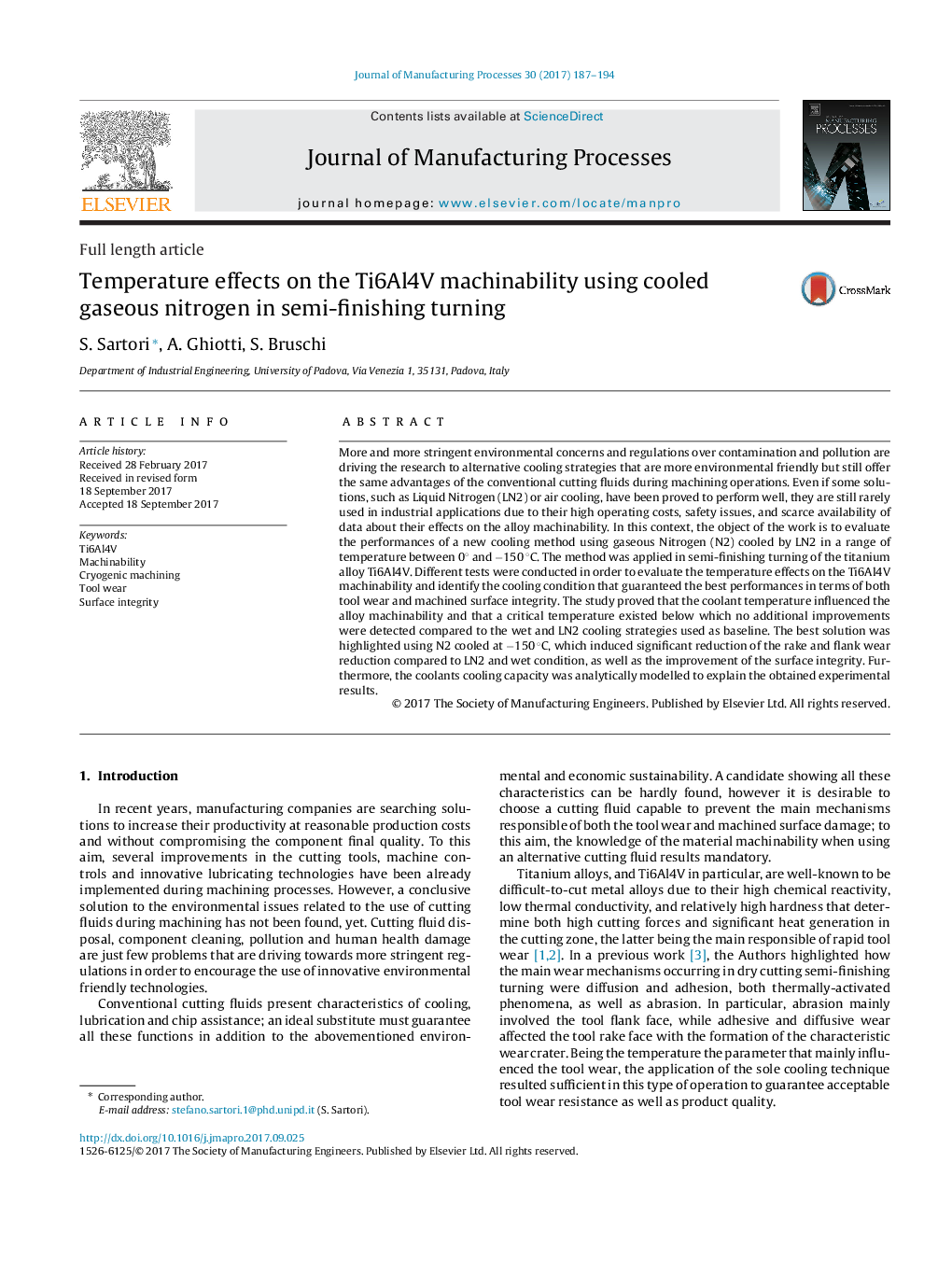| کد مقاله | کد نشریه | سال انتشار | مقاله انگلیسی | نسخه تمام متن |
|---|---|---|---|---|
| 5469213 | 1519226 | 2017 | 8 صفحه PDF | دانلود رایگان |
عنوان انگلیسی مقاله ISI
Temperature effects on the Ti6Al4V machinability using cooled gaseous nitrogen in semi-finishing turning
دانلود مقاله + سفارش ترجمه
دانلود مقاله ISI انگلیسی
رایگان برای ایرانیان
کلمات کلیدی
موضوعات مرتبط
مهندسی و علوم پایه
سایر رشته های مهندسی
مهندسی صنعتی و تولید
پیش نمایش صفحه اول مقاله

چکیده انگلیسی
More and more stringent environmental concerns and regulations over contamination and pollution are driving the research to alternative cooling strategies that are more environmental friendly but still offer the same advantages of the conventional cutting fluids during machining operations. Even if some solutions, such as Liquid Nitrogen (LN2) or air cooling, have been proved to perform well, they are still rarely used in industrial applications due to their high operating costs, safety issues, and scarce availability of data about their effects on the alloy machinability. In this context, the object of the work is to evaluate the performances of a new cooling method using gaseous Nitrogen (N2) cooled by LN2 in a range of temperature between 0° and â150 °C. The method was applied in semi-finishing turning of the titanium alloy Ti6Al4V. Different tests were conducted in order to evaluate the temperature effects on the Ti6Al4V machinability and identify the cooling condition that guaranteed the best performances in terms of both tool wear and machined surface integrity. The study proved that the coolant temperature influenced the alloy machinability and that a critical temperature existed below which no additional improvements were detected compared to the wet and LN2 cooling strategies used as baseline. The best solution was highlighted using N2 cooled at â150 °C, which induced significant reduction of the rake and flank wear reduction compared to LN2 and wet condition, as well as the improvement of the surface integrity. Furthermore, the coolants cooling capacity was analytically modelled to explain the obtained experimental results.
ناشر
Database: Elsevier - ScienceDirect (ساینس دایرکت)
Journal: Journal of Manufacturing Processes - Volume 30, December 2017, Pages 187-194
Journal: Journal of Manufacturing Processes - Volume 30, December 2017, Pages 187-194
نویسندگان
S. Sartori, A. Ghiotti, S. Bruschi,